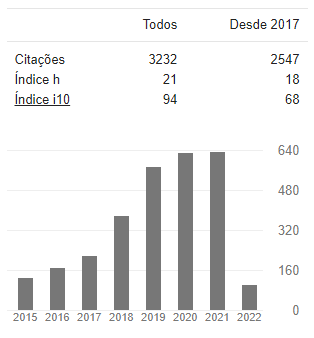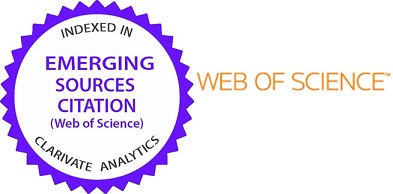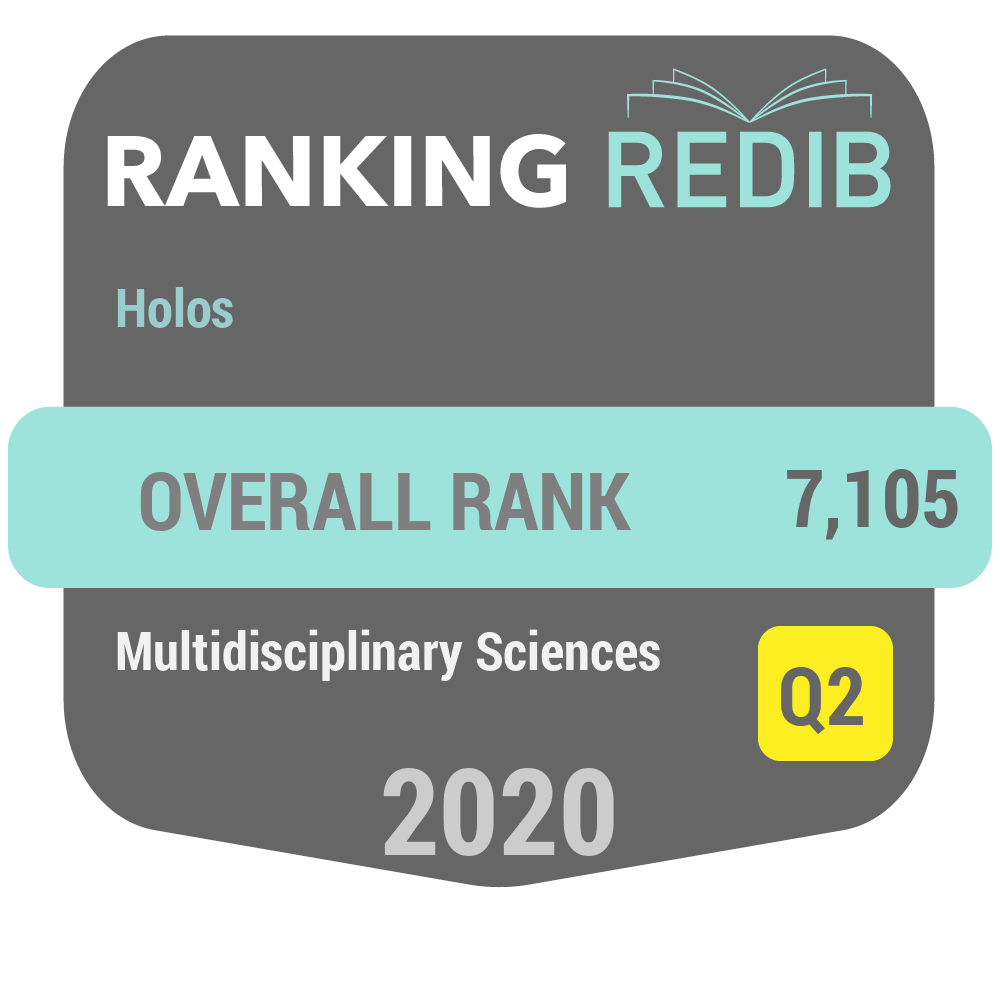COMPLEMENTARIEDADE HIDRO/SOLAR NA BACIA DO ALTO SÃO FRANCISCO: UMA ALTERNATIVA PARA GERENCIAMENTO DE RECURSOS HÍDRICOS
DOI:
https://doi.org/10.15628/holos.2023.16842Palavras-chave:
Modelagem ComputacionalResumo
Este trabalho avalia o benefício da operação combinada de um sistema hidro/solar na BASF, especificamente na Usina Hidrelétrica (UHE) Três Marias, a fim de elevar o nível do seu reservatório. Com este propósito, realiza-se a modelagem hidrológica/hidrelétrica na plataforma de simulação RS MINERVE. A modelagem hidrológica é feita utilizando três regiões hidrologicamente homogêneas e o modelo conceitual HBV. A modelagem hidrelétrica foi ajustada às características físicas da UHE Três Marias. Os cenários escolhidos avaliam um aumento de 7% na evapotranspiração e uma diminuição de 10% e 20% na precipitação, respectivamente. O armazenamento de água e a energia gerada na UHE Três Marias são as variáveis de saída do processo de simulação. A partir dos resultados da simulação, a Usina Fotovoltaica (UFV) projetada é dimensionada. Os resultados mostram que com a complementariedade da UFV projetada é possível aumentar o volume do reservatório para os cenários de estudo propostos. Portanto, a complementaridade hidro/solar na BASF pode ser uma alternativa para a gerenciamento dos recursos hídricos.
Downloads
Referências
AGÊNCIA BRASIL. 2014. “Três Marias reduces generation because of the reservoir level”. Accessed: June 1, 2020. https://agenciabrasil.ebc.com.br/economia/noticia/2014-10/hidreletrica-de-tres-marias-reduz-atividade-por-causa-de-nivel-de.
ANA(a). 2020. National Water Agency. “Hydrographic Divisions of Brazil”. Accessed: June 1, 2020. https://www.ana.gov.br/panorama-das-aguas/divisoes-hidrograficas.
ANA(b). 2020. National Water Agency. “Defluent Flow of the Três Marias Reservoir”. Accessed: June 1, 2020. https://www.ana.gov.br/noticias-antigas/vazapso-defluente-do-reservata3rio-de-traas-marias.2019-03-15.9145499514.
ANA(c). 2020. National Water Agency. “Situation Room of the National Water Agency”. Accessed: June 1, 2020. https://www.ana.gov.br/sala-de-situacao/sao-francisco/sao-francisco-saiba-mais/.
ANA(d). 2020. National Water Agency. “Hidroweb Version 3.1.1”. Accessed: June 1, 2020. http://www.snirh.gov.br/hidroweb/apresentacao.
BERGSTRÖM, S. 1992. “The HBV model - Its Structure and Applications”. Accessed: June 1, 2020. https://acesse.dev/bSVdZ.
CBHSF (a). 2004. São Francisco River Basin Committee. “Plan of Water Resources for the São Francisco River Hydrographic Basin”. Accessed: June 2, 2020. https://l1nk.dev/NoPgD.
CBHSF (b). 2020. São Francisco River Basin Committee. “Main Features of the São Francisco River”. Accessed: April 9, 2020. https://cbhsaofrancisco.org.br/a-bacia/.
CGEE. 2016. Center for Management and Strategic Studies. “Droughts in Brazil”. Accessed: June 2, 2020. https://www.cgee.org.br/documents/10195/734063/seca_brasil-web.pdf.
CEMIG (a). 2012. Energy Company of Minas Gerais. “Solarimetric Atlas”. Accessed: June 2, 2020. https://encr.pw/C4HIp.
CEMIG (b). 2020. Energy Company of Minas Gerais. “Hydroelectric Plants”. Accessed: June 2, 2020. http://www.cemig.com.br/en-us/Pages/default.aspx.
COUTO, H. J. B., OLIVEIRA, R. A. E., BRAGA, P. F. A. 2015. “Incident Solar Radiation Forecast in the State of Ceará - Brazil”. Holos Journal. DOI: https://doi.org/10.15628/holos.2016.2706. DOI: https://doi.org/10.15628/holos.2016.2706
EUCLYDES, H. P., RUBERT, O. A. V., FERREIRA, P. A., SANTOS, R. M. 2001. “Hydrological Regionalization in the Upper São Francisco Basin Upstream of the Três Marias Dam, Minas Gerais”. Brazilian Journal of Water Resources. DOI: https://doi.org/10.21168/rbrh.v6n2.p81-10.
GAUDARD, L., ROMERIO, F. 2014. Reprint of “The Future of Hydropower in Europe: Interconnecting Climate, Markets and Policies”. Environmental Science & Policy. DOI: https://doi.org/10.1016/j.envsci.2014.05.005. DOI: https://doi.org/10.1016/j.envsci.2014.05.005
HERNÁNDEZ, J. G, FOEHN, A., FLUIXÁ-SANMARTÍN, J., ROQUIER, B., ARQUIOLA, J. P., CESARE, G. 2019. RS MINERVE. “Technical Manual”. Accessed: June 2, 2020. https://crealp.ch/wp-content/uploads/2021/09/rsminerve_technical_manual_v2.25.pdf.
INMET. 2020. National Institute of Meteorology. “Weather Database”. Accessed: June 2, 2020. https://portal.inmet.gov.br/dadoshistoricos.
KOSA, P. 2009. “Air Temperature and Actual Evapotranspiration Correlation Using Landsat 5 TM Satellite Imagery”. Nat. Sci. Journal. DOI: https://doi.org/10.33899/rengj.2013.75441. DOI: https://doi.org/10.33899/rengj.2013.75441
MEDEIROS, I. P. M., ANDRÉ, T. S., VALCACER, S. M., BARBOSA, C. R. F. 2020. “Evaluation of the Efficiency of a Low-Cost Solar Prototype with Motion Based on a Luminosity Sensor”. Holos Journal. DOI: https://doi.org/10.15628/holos.2020.5616. DOI: https://doi.org/10.15628/holos.2020.5616
MENDIETA, J. D. P. 2018. “Integrated Hydro/Solar Operation in the Upper São Francisco Basin”. Accessed: June 2, 2020. http://repositorio.unicamp.br/jspui/handle/REPOSIP/331524.
MORIASI, D. N., ARNOLD, J. G., VAN LIEW, M. W., BINGNER, R. L., HARMEL R. D., VEITH, T. L. 2007. “Model Evaluation Guidelines for Systematic Quantification of Accuracy in Watershed Simulations”. American Society of Agricultural and Biological Engineers. DOI: http://dx.doi.org/10.13031/2013.23153. DOI: https://doi.org/10.13031/2013.23153
MOTA, F. S., BEIRSDORF, M. I. C., ACOSTA, M. J. C. 1977. “Estimates of Solar Radiation in Brazil”. Agricultural Journal . DOI: https://doi.org/10.1016/0002-1571(77)90016-4. DOI: https://doi.org/10.1016/0002-1571(77)90016-4
ONS. 2020. National Operator of the Electric System. “Inventory of Technical Data on Hydroelectric Plants”. Accessed: June 2, 2020. https://l1nq.com/0spCR.
SCHAEFFER, R., SZKLO, A. S., LUCENA, A. F. P., SOUZA, R. R., BORBA, B. S. M. C., COSTA, I. V. L., PEREIRA JR, A. O., CUNHA, S. H. F. 2008. “Climate Change and Energy Security in Brazil”. Accessed June 2, 2020. https://encr.pw/cBjUf.
SEIBERT, J. 1997. “Estimation of Parameter Uncertainty in the HBV Model”. Nordic Hydrology Journal. DOI: https://doi.org/10.2166/nh.1998.15. DOI: https://doi.org/10.2166/nh.1998.15
SILVEIRA C. S., SOUZA FILHO F. A., LOPES, J. E. G., BARBOSA, P. S. F., TIEZZI, R. O. 2014. “Analysis of Flow Projections in Brazilian Basins with Hydroelectric Power Plants using Data from the IPCC-AR4 for the 21st Century”. Brazilian Journal of Water Resources. DOI: https://doi.org/10.21168/rbrh.v19n4.p59-71. DOI: https://doi.org/10.21168/rbrh.v19n4.p59-71
SILVEIRA, C. S., SOUZA FILHO, F. A., MARTINS, E. S. P. R., OLIVEIRA, J. L., COSTA, A. C., NOBREGA, M. T., SOUZA, S. A., SILVA, R. F. V. 2016. “Climate Change in the São Francisco River Basin: Analysis of Precipitation and Temperature”. Brazilian Journal of Water Resources. DOI: https://doi.org/10.21168/rbrh.v21n2.p416-428. DOI: https://doi.org/10.21168/rbrh.v21n2.p416-428
THORNTHWAITE, C. W. 1948. “An Approach Toward a Rational Classification of Climate”. Geographycal Review. DOI: https://doi.org/10.2307/210739. DOI: https://doi.org/10.2307/210739
TIBA, C., REIS, R., COSTA, J. C. E., ABREU, J. F., AMONI, M., GUIMARAES, D. P., PORTO, M. A. D. 2014. “On The Development of Spatial/Temporal Solar Radiation Maps: A Minas Gerais (Brazilian) Case Study”. Journal of Geographic Information System. DOI: https://doi.org/10.4236/jgis.2014.63024. DOI: https://doi.org/10.4236/jgis.2014.63024
TURNER, S. W. D., HEJAZI, M., KIM, S. H., CLARKE, L., EDMONDS, J. 2017. “Climate Impacts on Hydropower and Consequences for Global Electricity Supply Investment Needs”. Energy. DOI: https://doi.org/10.1016/j.energy.2017.11.089. DOI: https://doi.org/10.1016/j.energy.2017.11.089
Downloads
Publicado
Como Citar
Edição
Seção
Licença

Este trabalho está licenciado sob uma licença Creative Commons Attribution-NonCommercial-NoDerivatives 4.0 International License.









































